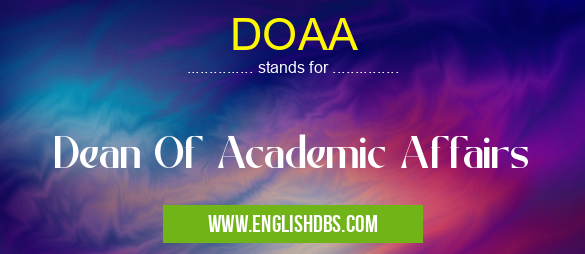What does DOAA mean in ACADEMIC & SCIENCE
The DOAA is a senior academic administrator responsible for overseeing the academic programs, faculty, and curriculum of an institution. They work closely with the President, Provost, and other administrators to ensure the overall academic quality and success of the institution.

DOAA meaning in Academic & Science in Academic & Science
DOAA mostly used in an acronym Academic & Science in Category Academic & Science that means Dean Of Academic Affairs
Shorthand: DOAA,
Full Form: Dean Of Academic Affairs
For more information of "Dean Of Academic Affairs", see the section below.
Essential Questions and Answers on Dean Of Academic Affairs in "SCIENCE»SCIENCE"
What is the role of the Dean of Academic Affairs (DOAA)?
What are the key responsibilities of a DOAA?
DOAAs typically have a wide range of responsibilities, including:
- Developing and implementing academic policies and procedures
- Overseeing curriculum development and assessment
- Ensuring academic quality and standards
- Managing faculty and academic staff
- Supporting student learning and success
- Collaborating with other departments and units within the institution
- Representing the institution on academic matters
What qualifications are typically required to become a DOAA?
DOAAs typically have a terminal degree in their field, such as a Ph.D. or Ed.D., as well as a strong record of academic leadership and administrative experience. They should also have excellent communication, interpersonal, and organizational skills.
How does a DOAA interact with faculty and students?
DOAAs work closely with faculty to support their teaching, research, and service activities. They also interact with students to provide guidance and support on academic matters, such as course selection, degree planning, and career development.
What are some of the challenges facing DOAAs today?
DOAAs face a number of challenges, including:
- Ensuring academic quality and innovation in an increasingly competitive higher education landscape
- Managing the increasing diversity of students and faculty
- Balancing the needs of different stakeholders, such as students, faculty, administrators, and the community
- Adapting to new technologies and pedagogical approaches
- Addressing issues of equity and inclusion in higher education
